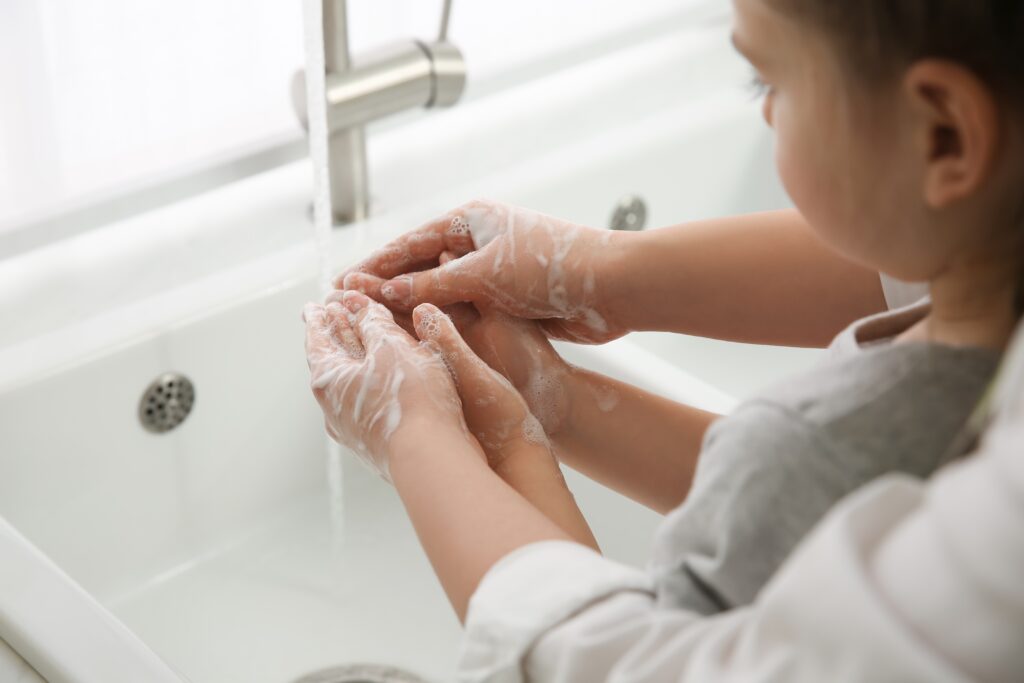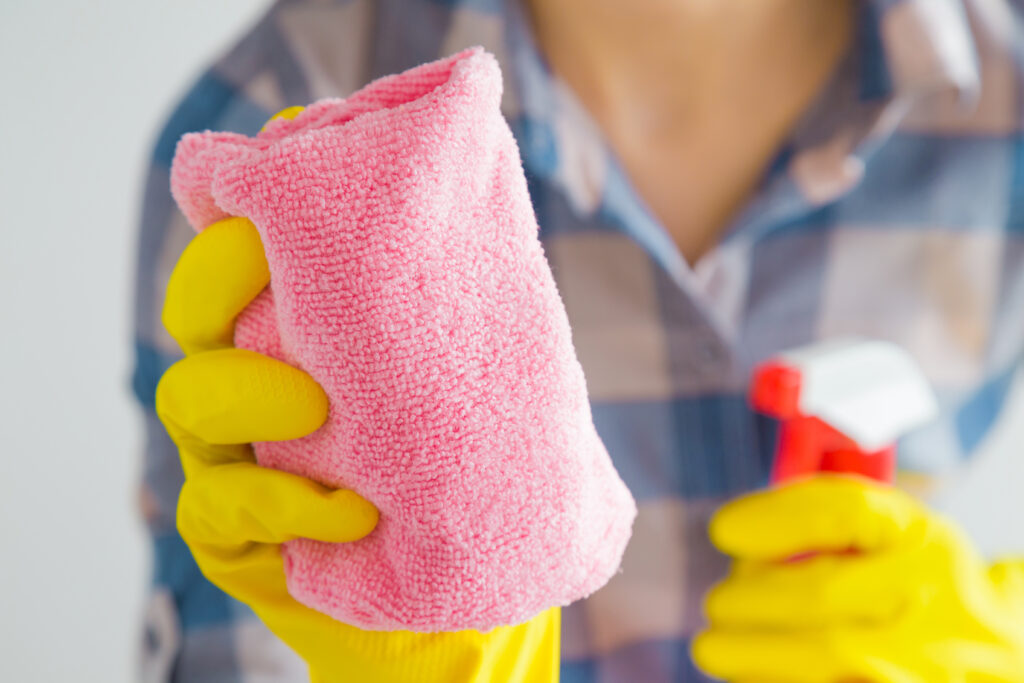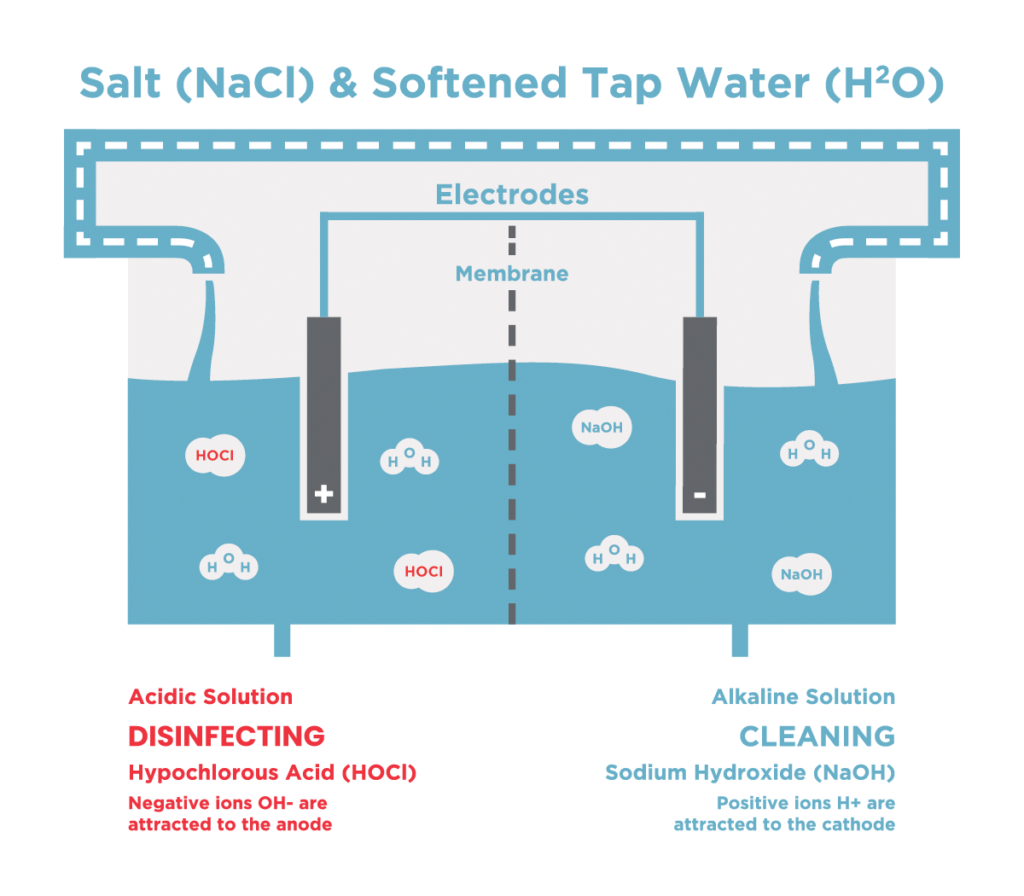This article examines essential infection prevention practices, explores the dangers of improper cleaning, and highlights the innovative role of electrolyzed water solutions – hypochlorous acid in particular – in creating healthier school environments.
Understanding the Challenges of Infection Control in Schools
Schools are breeding grounds for germs due to several factors:
- Close Proximity: Students and staff spend hours together in classrooms, cafeterias, and gymnasiums.
- Shared Surfaces: Desks, door handles, lockers, and computers are touched by many individuals throughout the day.
- Younger Populations: Children often have weaker immune systems and less-developed hygiene habits, making them more susceptible to illness.
These conditions amplify the risks of transmission for pathogens like the flu, norovirus, and even antibiotic-resistant bacteria. Addressing these risks requires a multifaceted approach combining hygiene education, effective cleaning practices, and advanced disinfection technologies.
DOWNLOAD OUR INFOGRAPHIC ABOUT HOW HYPOCHLOROUS ACID KILLS BACTERIA
Key Strategies for Infection Prevention in K-12 Schools
1. Hand Hygiene Programs
Hand hygiene is one of the simplest yet most effective ways to prevent the spread of infections. According to the Centers for Disease Control and Prevention (CDC), proper handwashing can reduce respiratory illnesses by 16-21% and gastrointestinal infections by 31%.
Implementation Tips:
- Educational Campaigns: Teach students and staff about proper handwashing techniques using engaging posters, videos, and demonstrations.
- Availability of Supplies: Ensure sinks are stocked with soap and paper towels, and place hand sanitizer stations in high-traffic areas.
- Regular Monitoring: Teachers and administrators should encourage and monitor hand hygiene, especially before meals and after restroom use.

2. Surface Disinfection Protocols
Surfaces in schools can harbor bacteria and viruses for hours—or even days—if not properly cleaned and disinfected. Frequently touched areas, such as desks, door handles, and light switches, are especially critical to address.
Dangers of Improper Cleaning:
- Residual Biofilms: Inadequate cleaning can leave behind biofilms—a layer of microorganisms that stick to surfaces. Biofilms protect harmful bacteria from disinfectants, allowing them to mutate into resistant strains.
- Cross-Contamination: Using dirty cleaning cloths or failing to follow a systematic cleaning process can spread germs rather than eliminate them.
DOWNLOAD OUR INFOGRAPHIC ABOUT BIOFILMS AND HOW TO FIGHT THEM
Best Practices for Surface Disinfection:
- Daily Cleaning Routines: Establish protocols for cleaning classrooms, restrooms, and common areas daily using effective and safe disinfectants.
- Target High-Touch Areas: Focus on areas like doorknobs, keyboards, handrails, and lunch tables, which are frequently used by multiple individuals.
- Use of Proper Tools: Provide janitorial staff with microfiber cloths, disposable wipes, and color-coded cleaning tools to reduce cross-contamination.

3. Optimizing Ventilation Systems
Airborne pathogens, such as those causing norovirus and influenza, pose significant challenges in enclosed spaces. Proper ventilation helps dilute and remove contaminated air, reducing the risk of disease spread.
Steps to Improve Ventilation in Schools:
- HVAC Maintenance: Regularly inspect and maintain heating, ventilation, and air conditioning (HVAC) systems to ensure optimal airflow.
- HEPA Filters: Upgrade filters to high-efficiency particulate air (HEPA) standards to capture smaller particles, including viruses.
- Fresh Air Circulation: Increase the intake of outdoor air by opening windows or using air purifiers in classrooms and common areas.
- Monitoring Air Quality: Install air quality sensors to track CO2 levels and adjust ventilation settings accordingly.
WATCH OUR WEBINAR ABOUT IMPROVING HEALTH & SAFETY IN SCHOOLS
Risks of Biofilms and Resistant Bacteria in Schools
One of the lesser-known threats to infection control is the presence of biofilms. Biofilms form when bacteria adhere to surfaces and produce a protective matrix. This matrix shields the bacteria from traditional cleaning agents, allowing them to thrive and mutate. Over time, biofilms can lead to:
- Increased Resistance: Pathogens within biofilms are up to 1,000 times more resistant to disinfectants than free-floating bacteria.
- Persistent Contamination: Even surfaces that appear clean may harbor dangerous microorganisms hidden within biofilms.
- Health Risks: Resistant bacteria, such as MRSA (methicillin-resistant Staphylococcus aureus), pose significant health risks to students and staff.
To combat biofilms effectively, schools need advanced cleaning solutions that break down these protective layers and eradicate bacteria at the source.
Electrolyzed Water Solutions: A Revolutionary Approach
In recent years, electrolyzed water has emerged as a game-changing technology in the fight against infection. Hypochlorous acid (HOCl), one of two electrolyzed water solutions, offers unparalleled cleaning and disinfecting capabilities while being safe for use in schools.
What Is Hypochlorous Acid?
Hypochlorous acid is a naturally occurring compound produced by the human immune system to fight infections. It can also be generated artificially through electrolysis, a process that combines salt, water, and electricity. The result is a non-toxic, highly effective disinfectant that kills 99.9% of bacteria, viruses, and fungi.

Benefits of Using Hypochlorous Acid in Schools
1. Broad-Spectrum Efficacy
HOCl is effective against a wide range of pathogens, including:
- Viruses (e.g., influenza, norovirus, and SARS-CoV-2)
- Bacteria (e.g., E. coli, Salmonella, and MRSA)
- Fungi (e.g., mold and mildew)
2. Safety for Students and Staff
Unlike traditional chemical disinfectants, HOCl is non-irritating and free from harmful fumes. This makes it safe for use around children, including those with asthma or allergies.
WATCH OUR WEBINAR ABOUT TOXIC CHEMICALS & PFAS IN SCHOOLS
3. Rapid Action
HOCl works quickly, killing germs in seconds without the need for lengthy dwell times. This efficiency helps streamline cleaning processes in busy school environments.
4. Residue-Free Cleaning
Unlike chemical cleaners that leave behind residues, HOCl evaporates completely, eliminating concerns about sticky surfaces or chemical buildup.
5. Environmentally Friendly
HOCl is biodegradable and produced using simple, natural ingredients. Schools can reduce their environmental footprint by switching to this eco-friendly alternative.
VIDEO: LEARN MORE ABOUT THE CONCERNS OF TOXIC CHEMICALS IN SCHOOLS
Applications of Hypochlorous Acid in Schools
Surface Disinfection:
HOCl can be used to disinfect desks, chairs, whiteboards, and other surfaces quickly and effectively.
Food Service Areas:
In cafeterias, HOCl can be used to sanitize kitchen surfaces, utensils, and serving areas, ensuring food safety.
Restrooms:
HOCl is ideal for disinfecting restroom fixtures and tiles, where biofilms and odor-causing bacteria are common.
Building a Culture of Cleanliness in Schools
Infection prevention is not solely the responsibility of custodial staff; it requires a collective effort from the entire school community. Here are ways to build a culture of cleanliness:
- Involve Students: Encourage students to take responsibility for their personal hygiene and the cleanliness of their surroundings.
- Train Staff: Provide teachers, administrators, and janitorial teams with ongoing training on infection prevention techniques and new technologies like HOCl.
- Engage Parents: Share tips and resources with parents to promote hygiene habits at home that align with school protocols.
- Monitor and Adapt: Continuously assess the effectiveness of infection prevention measures and adapt strategies as needed based on emerging threats and feedback.
Effective infection prevention in educational settings is essential to creating safe and healthy environments where students can learn and thrive. By implementing comprehensive strategies such as hand hygiene programs, robust surface disinfection protocols, and improved ventilation, schools can significantly reduce the risk of disease transmission. Additionally, innovative solutions like hypochlorous acid offer a powerful, safe, and environmentally friendly approach to cleaning and disinfecting.
By embracing these practices and fostering a culture of cleanliness, schools can protect the health of their communities while minimizing disruptions caused by illness. With the right tools and strategies in place, we can ensure that K-12 schools remain safe spaces for education and growth.




